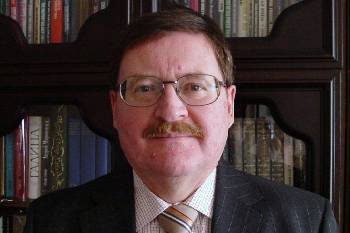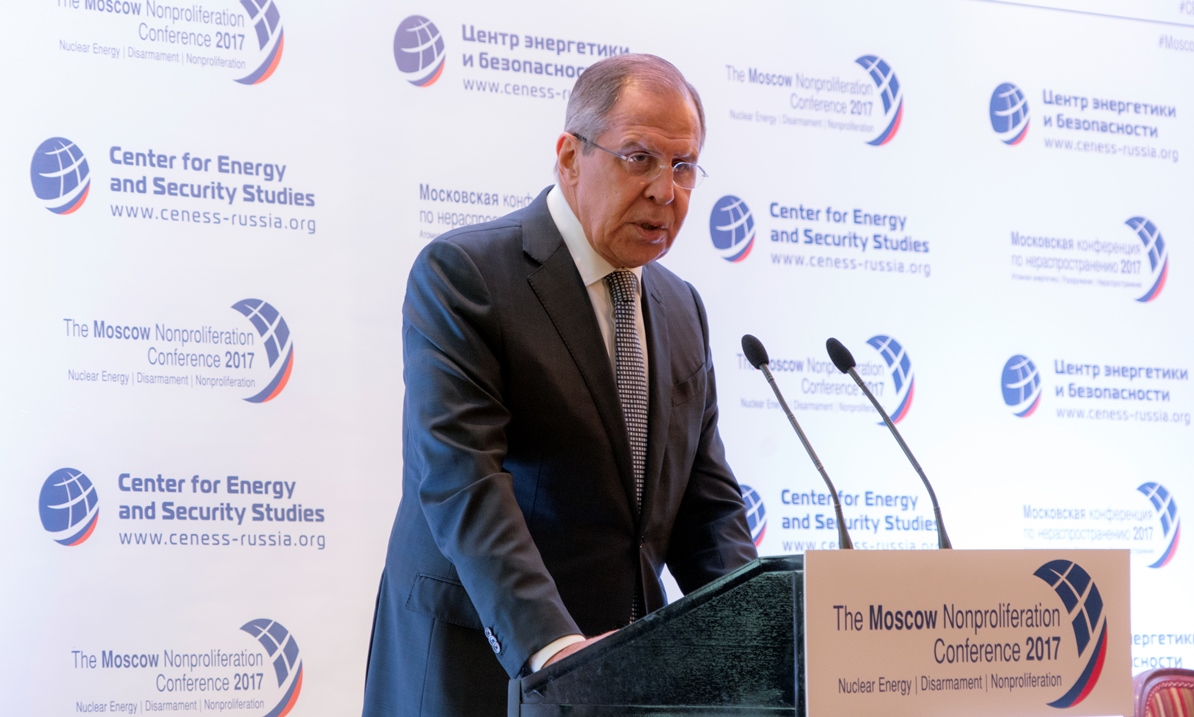
Vladimir Kozin
Ph.D., Expert Council member of the Russian Senate' Foreign Relations Committee, Professor of the Academy of Military Science, former high-ranking diplomat, leading expert on disarmament and strategic stability issues.
Russia and the US have been adhering to the terms of the New Strategic Arms Reduction Treaty (New START) since 2011, viewing it as an important practical agreement to control strategic nuclear weapons. By Feb. 5, 2018, both sides are expected to have met the treaty’s limits on strategic offensive nuclear weapons, which allows each side a maximum arsenal of 1,550 nuclear warheads and 800 deployed and non-deployed launchers and bombers.
Not so long ago analysts in the US media were arguing for the treaty to be extended for an additional five years after it expires in 2021, i.e., to keep it functioning until 2026.
But a number of problems related to Russian-US arms-control issues remain unresolved, ranging from questions about missile defense to the prevention of underwater incidents involving submarines, and much more.
The proposal to extend New START for another five years and to draft a new START IV Treaty could gain traction if it were considered in isolation from other issues that powerfully impact regional and global stability. That proposal would be more worthy of attention if a genuine "strategic partnership” existed between Moscow and Washington – then, in the resulting atmosphere of complete trust, there would be no diametrically opposed approaches to resolving so many pressing international problems.
But unfortunately, nothing of the sort has been evident for many years. The relationship between Russia and the US is currently in a state of deep crisis. Washington has unleashed Cold War 2.0 against Russia, and unlike the initial phase of that conflict (1945-1991), this has taken on an entirely new and more dangerous dimension.
Naturally Moscow is ready to consider Washington’s official proposals to extend New START, but only if they come through official channels and not from the media or the ranks of scientists and researchers, because Article 14 of this treaty stipulates the correct procedure for entertaining such a motion.
What’s more, one could also say that from the perspective of ensuring global stability, it seems strategically dangerous to set limits that would be binding until 2026 on launchers, bombers, and warheads, and also to continue down the path of further reductions under some kind of new treaty (the Newest START), for the following nine reasons:
- By 2020, i.e., six years before New START’s extended expiration date, the ratio between US ballistic-missile defense systems and Russian strategic offensive weapons will be 2:1, while the ratio between US missile-defense interceptor systems vs. Russian strategic warheads will even reach as high as 3:1 (and neither of these scenarios takes into account the Patriot missile system). The uncontrolled buildup of US missile-defense interceptor systems and the unimpeded expansion of their zone of deployment will seriously worsen this dangerous disparity. Relying on its advantage in ballistic-missile defense, the United States could easily launch a first nuclear strike not only on Iran or North Korea, but even on Russia or China, and then it would be sure to hide from any retaliatory strike under the cover of such an impermeable "missile shield.” The lower the ceiling on Russia’s strategic nuclear weapons and the greater the number of interceptors in the US missile-defense system that can deflect them, the more tempting it will be for Washington to launch a first, "preemptive” nuclear strike, on Russia in particular.
- American tactical nuclear weapons are deployed in four European states and the Asian half of Turkey, and those could be used to launch a first nuclear strike or to amplify nuclear strikes launched with the assistance of strategic offensive weapons. It should also be kept in mind that American nuclear forces that are officially classified as "tactical” can simultaneously carry out both tactical as well as strategic nuclear tasks, depending on their mode of delivery – whether by tactical or strategic aircraft.
- The United States uses heavy strategic bombers as part of its military exercises or as a "show of force” in Europe, Asia, and the Asia-Pacific region.
- Washington regularly violates the 1987 Intermediate-Range Nuclear Forces Treaty. The Pentagon has already violated this treaty 92 times since 2001 while testing the effectiveness of the missile-defense systems of the US and its allies, by using as targets the types of short-, medium-, and intermediate-range ballistic missiles that are prohibited by that treaty. The US military budget for 2018 has allocated $65 million to create a new ground-launched nuclear cruise missile. In addition, there are voices in Washington that are arguing for a unilateral US withdrawal from this treaty.
- The year-round, 24/7 Baltic Air Policing operations continue in the skies of three Baltic states, using "dual-capable” aircraft from the three Western nuclear powers that can carry either conventional or nuclear weapons.
- The US adheres to a doctrine of "unconditional offensive nuclear deterrence,” allowing for either a massive or a limited first nuclear strike against Russia, China, North Korea, and Iran.
- Washington stubbornly refuses to come any agreement that would prevent the weaponization of space.
- The United States and NATO are engaged in an unrestrained buildup of their general-purpose forces, which include heavy weapons, and conduct large-scale military exercises of an offensive nature in regions bordering the territory of Russia and its allies. Since 2014, NATO has expanded the military and aerial reconnaissance it conducts in immediate proximity to Russia by 400% and 900%, respectively.
- US and NATO framework documents still include inappropriate statements about Russia’s actions on the international stage, and in terms of economics – illegal sanctions are supported that punish as many as 400 different Russian institutions and businesses, plus 200 individuals, which in no way helps to restore mutual trust.
Once the demands of New START have been met in February 2018, Russia will have effectively exhausted its options for continuing negotiations with the Americans to reduce strategic offensive arms on a bilateral basis.
In a similar vein, all nuclear states should be involved in a corresponding process of negotiations. First off, this should pertain to Britain and France – the primary nuclear allies of the United States, which have reciprocal commitments in the implementation of "unconditional offensive nuclear deterrence.” When calculating how to balance the future nuclear capabilities of Russia vs. the three Western nuclear powers, the combined nuclear arsenal of the United Kingdom, the US, and France should be taken into account, in order to ensure that that does not outweigh the nuclear potential of the Russian Federation.
Western commentators are trying to spread rumors that the Russians have already made up their minds about extending New START. But that’s not so. No such decision has been made as yet. They are currently still thinking through their positions on this issue. That was the official Russian pronouncement on Oct. 20 at the plenary session of the Moscow Nonproliferation Conference.
The US military establishment will have to get used to the idea that it is futile to exert media pressure on Russia when it comes to disarmament issues and that any further efforts to make progress must begin with steps to restore the mutual trust that has been lost and to address the many arms-control problems in question that are impacting the strategic balance of power between Moscow and Washington.





_jpg/250px-ElbeDay1945_(NARA_ww2-121).jpg)





